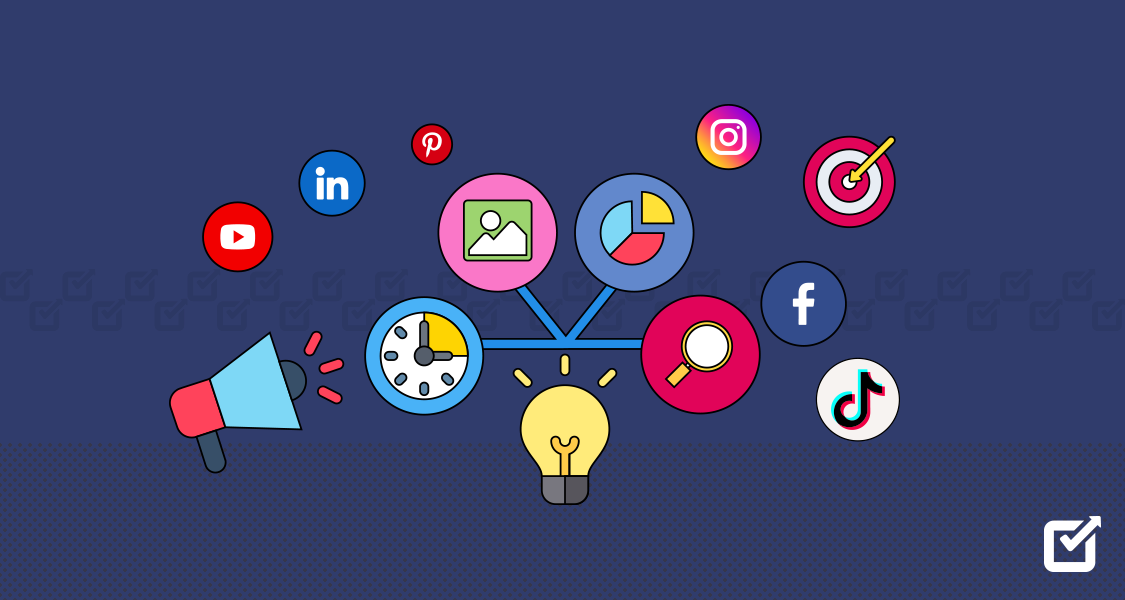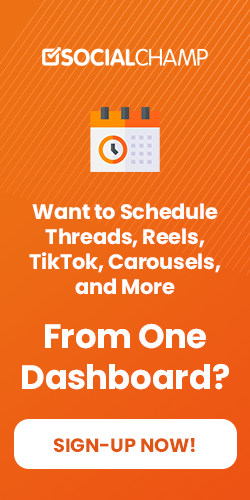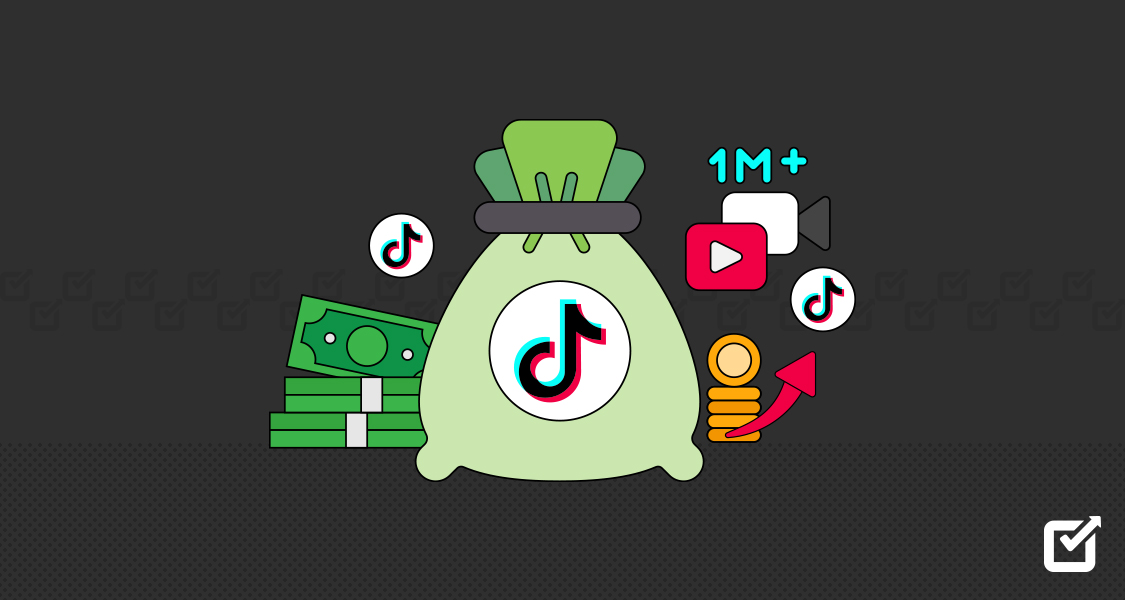If you’re looking for a debate on organic vs paid social media, you might be barking up the wrong tree.
Didn’t expect that?
Well, that’s because you really need both to nail social media marketing in 2024. We’re living in a time where everything moves super fast, and relying on just one strategy isn’t the best move. The current market is more about using both organic and paid social media together rather than pitting them against each other. You need strategies that can harness the strengths of both to really make an impact.
So, if you’re curious about how to apply these tactics to your social media management, hang tight! We’re about to cover everything from paid to organic social media examples. It’s going to be a fun ride—exploring each one and then seeing how they can team up. So, let’s dive in!
What Is Organic Social Media?
I bet if you take a quick scroll through your Instagram right now, you’ll spot at least 10 organic posts. That’s how popular they are! Organic social media includes all the free content you see on platforms, crafted with natural strategies to engage audiences without spending a dime. It’s all about connecting authentically.
Simplify Organic Social Media Marketing With Social Champ!
Sign up for Social Champ today and streamline your social media management like a pro! Start your free trial now and see the difference!
Every business starts out with organic posts to build trust with its audience. This approach is all about sharing content that really clicks with your followers. Plus, it matters where you’re posting. For example, if you are keeping Instagram as your primary focus, you might need to pay more attention to the visuals.
The following are some excellent organic social examples that might inspire you to create content.

@republicoftea is totally riding the Bridgerton wave to bring its customers together. It’s rolled out a limited edition of its products that’ll be hot until the next season drops. Fans love this special packaging. This is what makes jumping on the latest trends such a fun part of organic social media!

This Mother’s Day post by @themelt is spot-on for organic social media. It cleverly markets its product while capturing the spirit of this special day. Throw in the right hashtag, and posts like these are sure to find the perfect audience.
Don’t we all miss our office besties on their day off?
@wework has got the emotion just right with this Instagram Reel. Video content is also powerful for generating organic social media content.
Benefits of Organic Social Media
Now let’s talk about some benefits of organic social media because why would anyone invest so much time and effort into creating organic content if it wasn’t that beneficial in the first place, right?
It’s Free
They say there’s no such thing as a free lunch, but that’s not exactly true when it comes to social media!
You don’t have to pay anyone to create or promote your content. All you need is a camera and an internet connection—which, let’s face it, most of us already have—and you’re good to go. Start creating content, and with the right strategies, you’ll definitely see your engagement climb. Just remember to play to your strengths in your content so people can see why they should follow you, just like @_foodstories_ has done in this video.
It’s Sustainable
If one thing that’s sure to last a long time, it’s organic social media. If you build your audience from the ground up, purely through your content and effort, they’re likely to stick with you for the long haul—hopefully, that’s a long way off!
Right now, the biggest challenge with social media is staying relevant. Trends come and go so quickly; you never know when something might become outdated, and suddenly, you’re the boomer for being out of touch. But organic content? That never goes out of style. It’s a solid foundation you can always rely on as your greatest strength in the social media game.
It Builds Trust
Do you know when your content is completely organic, it really boosts your credibility with viewers?
It makes your brand seem more trustworthy. People might think that if you’re not splashing out on paid promotions, your product must inherently offer enough value on its own. The real reasons might be totally different, but leaning into organic content in this organic vs. paid social media showdown really instills confidence in your business. So, it’s best to be as transparent as possible with your followers through organic posts, just like we do at @socialchampio.

A snapshot of Instagram
What Is Paid Social Media?
With all the organic content out there, you might wonder if paid social media has become the odd one out, but that’s not the case.
Paid social media involves allocating an advertising budget to boost promotions and reach a broader audience. While organic content grows your audience naturally over time, paid promotions can place you directly in your target audience’s feeds—ensuring they’re aware of your presence on social media platforms.
Many businesses successfully use paid social media to make a significant impact. Here are a few examples of how they’re doing it.
In this video, @blissfulheadspacespa has teamed up with @yeswilliamsburg—an influencer—to promote their services. This collaboration is a prime example of paid marketing. Influencers have audiences that businesses can tap into, making this strategy a popular choice for many companies looking to extend their reach.

Another approach to paid social media is sponsoring posts to ensure they appear directly in users’ feeds. For example, this bedsheet brand paid Facebook to recommend their business to people with similar interests. This method can be applied across various platforms, including TikTok, Instagram, and YouTube, allowing your posts to reach a wider audience right where they scroll.
Benefits of Paid Social Media
Now, let’s talk about the benefits you will get after spending money on your marketing because, ultimately, every dollar spent should bring a return.
It Has Trackable ROI
With traditional marketing, you often end up guessing what’s working and what’s not. But with modern marketing and paid social media, it’s a whole different story. You can track and measure everything!
For instance, if you launch a paid marketing campaign on TikTok, you can use a TikTok monitoring tool to track and analyze your results. That’s one of the huge perks of paid social media. Getting a clear view of your results can really help you refine your strategy and keep you ahead in the game.
It Has Advanced Targeting
Paid social media lets you target your audience way more effectively than just hoping the right people stumble across your organic content. With organic posts, you’re at the mercy of the algorithm, and sometimes, your content might end up reaching people who aren’t even interested. But that’s not how it goes with paid content!
When you use paid social media, you get to control exactly who sees your ads. This way, you can make sure your message only pops up for users who are actually likely to be interested. The more focused your targeting, the better your results are going to be—and that’s where paid social media really shines.
Related Article: Weighing the Pros and Cons of Social Media
Organic vs Paid Social Media: 3 Key Differences?
You might think organic and paid social media are complete opposites, but that’s not entirely true! Sure, they have their differences, but you’d be surprised at how much they actually have in common. For starters:
- Both aim to catch the eye of your audience.
- Both can deliver great returns, each in its own time.
- Both need to be high quality to really make an impact.
Now, when it comes to the differences, there are quite a few, and it’s worth getting to know them separately. Let’s dive into some key distinctions you should keep in mind.
Short-Term vs Long-Term Goals
Paid social media involves investing in ads that target specific demographics, making it a powerful tool for achieving immediate goals. This approach helps businesses reach beyond their existing followers to capture new leads and conversions quickly, making it ideal for short-term objectives.
On the other hand, organic social media marketing is more about building and nurturing relationships with your audience over time. It relies on non-paid strategies like posting engaging content, interacting with followers, and developing a consistent brand voice. While it may take longer to see substantial results from organic efforts, this approach is crucial for long-term success.
Cost
You can pretty much guess the difference from the names, right?
With paid social media, you’re putting your money on the line, whereas organic social media just costs you time and effort. When you run paid campaigns, you’re directly investing in ads to bring in business fast.
On the other hand, organic social media is all about growing your audience naturally over time. It’s not about quick wins. Instead, you focus on sharing content that genuinely interests your followers, engaging with them through comments, and building a community around your brand.
Marketing Strategy
You know how they say you can’t kill two birds with one stone? The same goes for using the same strategy for paid and organic social media. If you look at organic social examples, you’ll notice the content is quite different from what you see in paid campaigns.
For organic, it’s all about building a natural connection with your audience. With paid social media, however, you aim for a more direct impact. You might be promoting specific products, targeting particular demographics, or pushing for immediate conversions. So, to really nail your social media goals, you need two distinct strategies. Tailoring each approach to its specific purpose clarifies your goals and optimizes your efforts to ensure you’re hitting the right notes with each type of audience.
Featured Article: 10 Reasons Why You Should Automate DMs on Social Media
Tips to Create Organic and Paid (Hybrid) Strategy
Here’s how you can work with both organic and paid social media to get the best results:
Boost Your Top Organic Posts
When you really put in the time on social media, your organic posts begin to pick up steam. You’ve probably noticed how some people like @anahitaxo pin their most popular posts on Instagram and TikTok; those usually have racked up the most views and likes. You can boost your top organic posts so they can reach more new users.

A snapshot of TikTok Let Your Posts Promote Themselves
Diving straight into your wallet isn’t always the best move with social media. Imagine you’re launching a new product or kicking off a new business initiative. Would you immediately start running ads without seeing if they’re really needed?
A better approach is first to craft a compelling organic post. Share it in your stories and create a highlight so even your new followers can find it easily. If it naturally does well, you might not need to spend a dime. Only consider reaching for your wallet if you want to take that post to the next level and achieve something bigger. Until then, let the post do its own legwork.
Work With Influencers
Influencer marketing is packed with benefits you really shouldn’t overlook. It’s a hot trend that’s not fading any time soon, especially with new influencers constantly popping up on social media. You can tap into this by hiring an influencer to help market your business. Now, you might wonder how this fits into the organic vs paid social media debate. Well, even though you’re paying the influencer, you’re essentially buying into their organic reach. So, doesn’t that kind of make it a hybrid strategy?
Follow Trends
These days, trends pop up and fade away super quickly, so you’ve got to act fast. When you spot a trend that aligns with your audience and industry, jump on it and create content right away. You might even consider bringing an influencer on board to help ensure your brand gets tied to the trend. If your organic posts aren’t catching as much attention as you’d hoped, remember that you can always give them a boost to ramp up engagement. Use that option when you need it—it’s there for a reason!
Target Lookalike Audience
The more followers and interactions you have on social media, the more you’ll learn about your audience, like their demographics and preferences. This information is super useful when you’re launching paid campaigns because you can target your audience more precisely. Essentially, building a strong organic presence helps you collect valuable data, which in turn makes your paid campaigns more targeted and effective.
Conclusion
If it were just a simple choice between organic vs paid social media, it would be a lot easier. But the truth is, if you really want to succeed on social media, you’ve got to use both to see the best results.
For small or new businesses, organic social media can feel like the safer bet, but you don’t want to miss out on the benefits of paid social media. Yes, it requires an investment, but the returns are worth it, and it can save you a lot of time. The key is to develop a strong marketing strategy that incorporates both.
Frequently Asked Questions
1. How Do I Decide Between Organic and Paid Social Media?
2. Can Organic Social Media Alone Be Effective?
3. What Types of Content Work Best for Organic Social Media?
- High-quality
- User-generated
- Trendy
- Niche specific
4. How Should I Measure the Success of Organic vs. Paid Social Media?
5. What Are Some Common Mistakes in Using Organic or Paid Social Media?
- Doing everything on your own
- Not running enough tests
- Not being flexible to change
- Not targeting the right audience













2 thoughts on “Organic vs. Paid Social Media in 2024: Should You Choose Paid, Organic, or Both?”
Thanks for the detailed breakdown! For a small business just starting out, would you recommend focusing more on building an organic presence first, or diving straight into paid advertising?
For most small businesses, starting with organic social media is usually the better approach. It allows you to build a solid foundation and understand your audience. Thank you and let me know if you have any more questions!